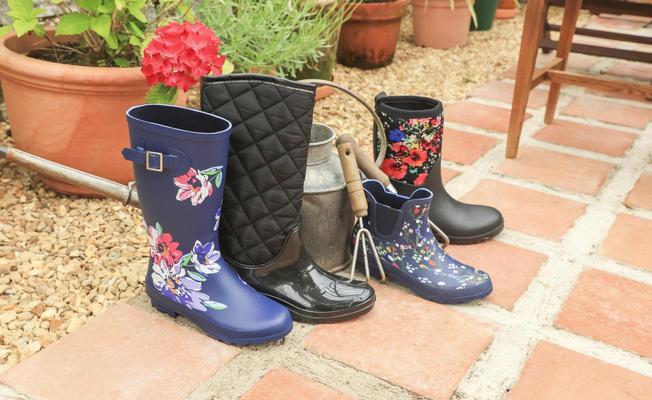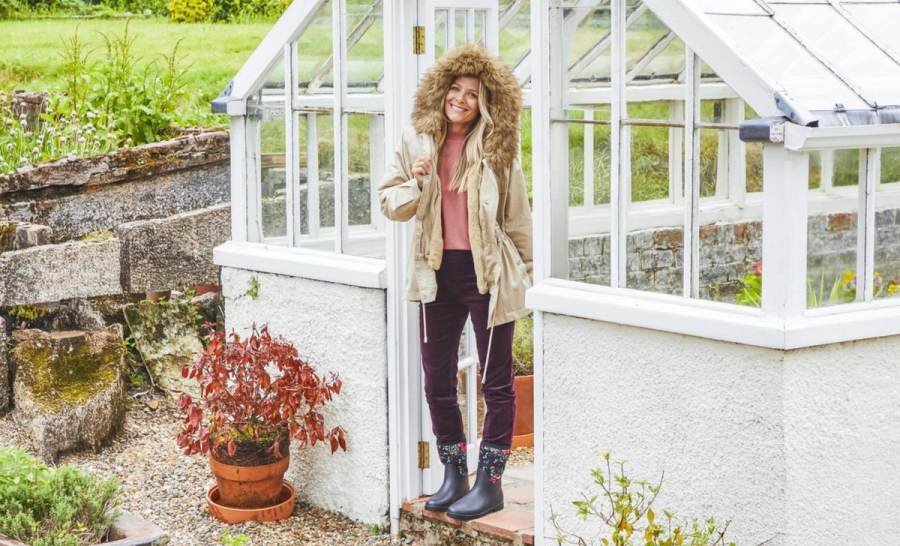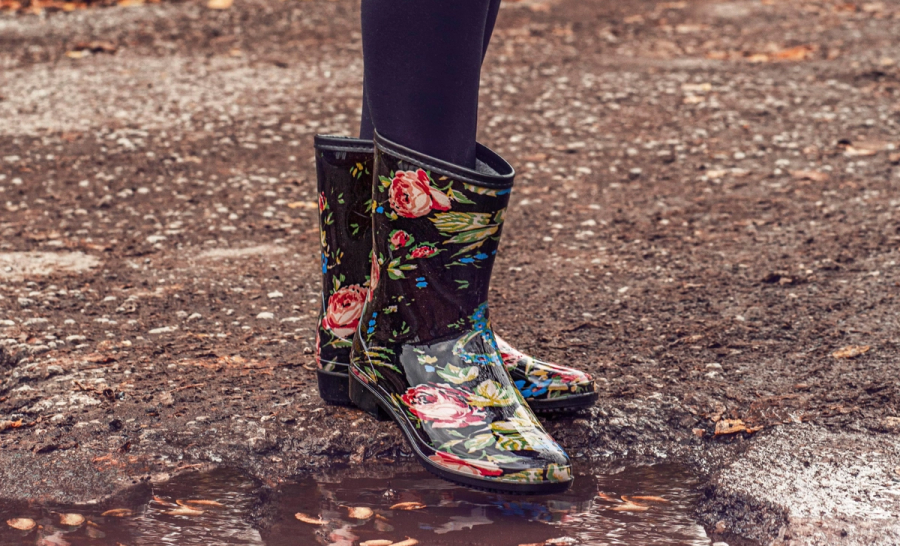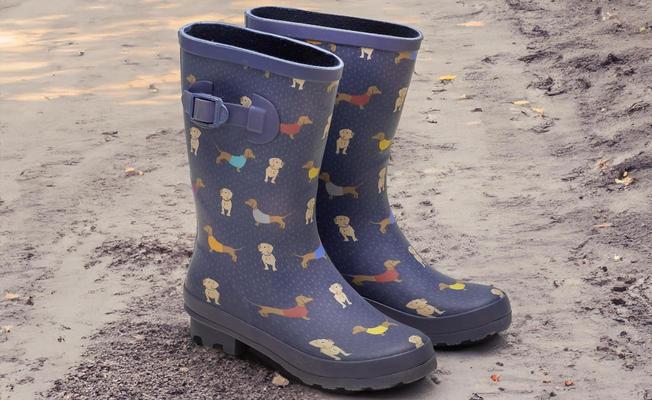
The Best Wellies for Walking
31 October 2025
In the UK, when it comes to walking in the great outdoors, there’s a fairly high chance that rain, mud, or puddles will be involved. Whether it’s a countryside ramble, a rainy-day dog walk, or a muddy festival field, though, potential wetness has never been a good enough reason to stop us.
Equipped with a good pair of wellington boots, we can confront any weather this country can throw at us. But not all wellies are created equal. If you’re planning to cover some ground, you need to know what makes the best wellies - and get hold of a pair.
In this post, we’ll guide you through what to look for in a walking wellie. Here’s what we’ll cover:
- A brief history of the Wellington boot
- What makes a good wellie for walking
- Features to look for in your ideal wellie
- Do you need insoles or socks?
- Can you walk long distances in wellies?

A Brief History of Wellies
Wellington boots, or wellies, as pretty much everyone calls them, trace their origins back to the early 19th century. Arthur Wellesley, the 1st Duke of Wellington, instructed his shoemaker to modify the traditional Hessian boot, leading to a streamlined leather boot that became popular with aristocrats and military officers.
As the industrial revolution got underway, vulcanised rubber technology made mass-produced rubber Wellingtons more accessible and arguably more practical. By the mid-20th century, this humble boot had become a household essential thanks to its ability to perform in the UK’s famously wet climate.
Today, wellies have evolved beyond their utilitarian roots: with improvements in materials, insulation, and design, the modern welly boot blends heritage style with high-performance comfort. They’re even considered fashionable, with engaging designs lending themselves well to a range of stylish wet-weather outfits.
What Makes a Wellie Good for Walking?
The focus of this guide, though, is walking in wellies. A good wellie for a walk should feel as comfortable and supportive as a high-quality walking shoe: the goal isn’t to sacrifice comfort or durability for waterproofing. While traditional rubber boots may do the job for a short walk or a bit of gardening, long treks require features designed for movement, stability, and changing terrain.
Here’s what separates a walk-friendly wellie from the average pair:
- Comfortable footbed and cushioning: long walks require shock absorption and arch support to help you avoid injuries and stay comfortable throughout.
- Durable, flexible materials: you want a boot that bends with your foot but holds up to daily wear, again to keep you comfy and protect your feet.
- Grippy sole: deep lugs or tread patterns are essential for slippery paths and muddy fields, which you’ll find plenty of on a good walk.
- A snug but flexible fit: your boot should stay secure without rubbing or cutting into your legs; this one is extra important.
- Weatherproofing: waterproof materials and insulated linings help to protect you against rain and cold, meaning you can keep walking for longer.
Below, we explore the features to look for in more detail.

Walking Wellie Features to Look For
In this section, we take a closer look at the most important features to consider when shopping for wellies built for walking.
Fleece Lining for Warmth
Fleece-lined wellies are ideal for cooler months or damp, chilly weather. The soft lining traps heat and adds comfort without the need for thick socks, which can cause rubbing or discomfort during long walks. This extra layer of insulation helps regulate temperature and prevents the cold feet feeling that often accompanies long winter strolls.
Best for: winter walks, country rambles, or early morning dog walks.
Top pick: fur cuff lined ankle wellies

Adjustable Gussets for a Tailored Fit
Adjustable gussets or calf buckles let you adjust the fit of your wellies, making them more comfortable for extended wear. Whether you're wearing thick trousers or tucking in jeans, the added flexibility helps reduce chafing and supports better movement. It also improves airflow in warmer conditions, helping your legs stay cool.
Best for: walkers with wider calves or those layering up.
Top pick: ankle boot wellies
Cushioned Insoles for All-Day Comfort
Lots of modern wellie designs include cushioned, supportive insoles, often with built-in arch support. This is essential if you plan to wear your boots for long stretches of time. Insoles help distribute weight evenly, reducing foot fatigue and joint strain.
Best for: urban walking, dog walkers, and day-long wear.
Top tip: if your boots don’t come with supportive insoles, consider adding your own insoles to increase comfort.
Reinforced Soles for Durability
A reinforced or multi-layered sole offers better resistance to punctures and wear, while helping to keep you more stable. Look for deep tread patterns that can grip a variety of surfaces, from gravel paths to slippery fields. Rugged rubber outsoles make a real difference on mixed terrain.
Best for: woodland trails, coastal walks, or hilly terrain.
Top pick: Long Wonder Welly
Lightweight Construction for Reduced Fatigue
Walking in heavy wellies can tire you out surprisingly quickly, especially if mud is involved. Lightweight wellies reduce fatigue without compromising on protection. Newer materials and EVA soles provide excellent waterproofing while remaining easy on the feet.
Best for: all-day walking or travel.
Top pick: Short Wonder Welly

Pull Tabs or Zip Closures for Easy On and Off
It sounds simple, but when you’re dealing with mud, thick socks, or cold hands, getting your boots on and off quickly becomes important. Pull tabs, side zips, and rear kick-spurs help you get out the door faster and avoid unnecessary struggle.
Best for: quick walks, festival wear, or everyday use.
Top pick: warm-lined wellies

Do You Need Insoles or Socks?
If you’re walking long distances or prone to foot pain, you may be wondering whether pairing your wellies with cushioned socks or insoles is the right shout. We recommend doing so and looking for moisture-wicking materials that help regulate temperature and reduce friction.
Top Tip: Wool is the best bet for cool weather.
Can You Walk Long Distances in Wellies?
Another common question: Are wellies OK for long-distance walking?
Our answer is a hedged yes; they are if you choose the right pair. Traditional rubber wellies without support may be fine for short walks, but quickly become uncomfortable over longer distances. If you plan on long walks or hikes, opt for wellies specifically designed for walking or outdoor activities. These often feature contoured footbeds, ankle support, breathable linings, and other features mentioned above.
Pairing your boots with good socks and taking breaks when needed will also make a big difference in comfort and endurance.
Explore Our Wellington Boots Collection
Whether you're heading out on a countryside stroll, walking the dog, or planning a weekend in the wild, the right Wellington boots will make all the difference.
To get your brand new pair, explore our full women’s wellies collection and men’s wellies collection. Our extensive range features fleece-lined favourites, adjustable fits, and practical designs built for walking.
And if you’re still unsure which style is best for you, pop into one of our stores - one of our footwear specialists will be happy to help you find your perfect pair.
